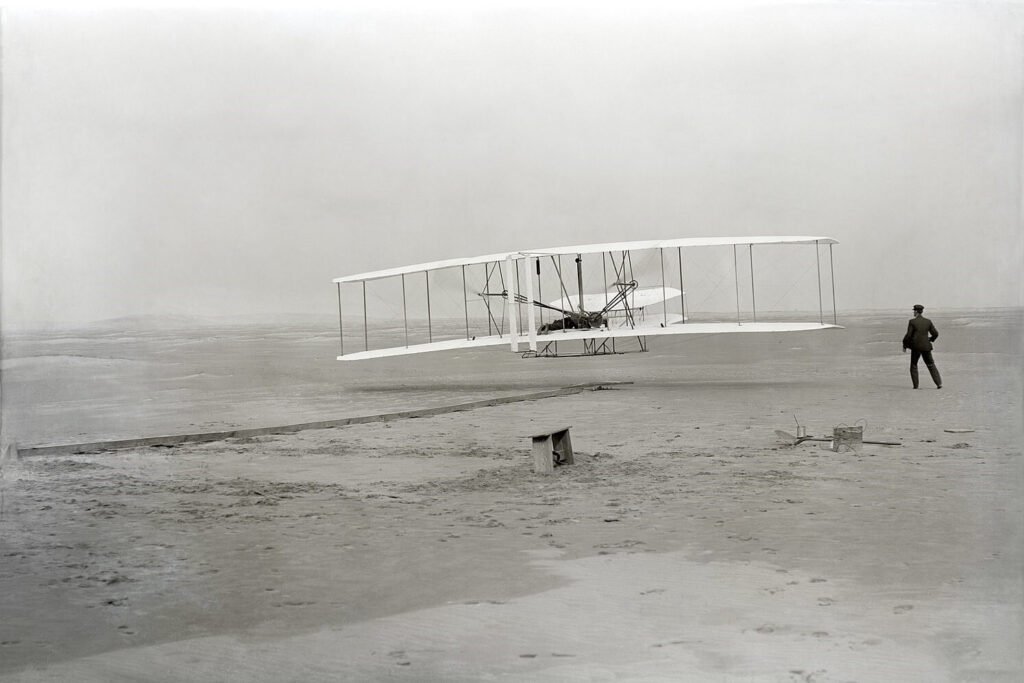The aviation industry stands out by having an enormous and fascinating history. Aviation has numerous first times beginning with the world’s first hot-air balloon, the dirigible, first licensed woman pilot, and many more. All those first times made extraordinary marks in the history of aviation. In this article, let’s take a quick glance at the top 5 first times that amazed the world and created history.
The first-ever heavier than air flight
In 1903, brothers Orville and Wilbur Wright made the first-ever completed flight of a self-propelled, heavier than air aircraft. On December 17, the first flight lasted for 12 seconds and covered the distance of 120 feet. After more tests later on the same day, Wilbur flew reached 852 feet in 59 seconds. The flight was witnessed by five people, which were the first ones to see how the modern aviation age was born.
Who said pigs do not fly?
In 1909, aviation history disproved the long-standing opinion that pigs cannot fly. Moore-Brabazon made the first-ever flight with the pig in his personal French-built Voisin aircraft. The pig was placed in the wicker basket, which was in turn strapped to a wing strut of the aircraft. The most remarkable part of this flight was the sign on the pig’s basket, which said “I am the first pig to fly.” And it was absolutely right. The first-ever pig flight took off at Leysdown in Kent, England.
The first non-stop flight crosses the Atlantic Ocean
In 1919, Captain John Alcock and Pilot Arthur Whitten Brown had what they called a “horrible trip” that lasted over 16 hours. The “horrible trip” marked their names into aviation history as they became the first-ever people to fly nonstop across the Atlantic Ocean. Alcock and Brown flew from St. John’s, Newfoundland, Canada, to Clifden, Connemara, County Galway, Ireland. The mentioned “horrible trip” was full of fog and clouds which sometimes made it insanely difficult for Brown to determine the location of the aircraft. After the successful landing, Alcock and Brown were awarded a monetary prize, which was presented by British aviation secretary Winston Churchill.
She was fierce and her name was Amelia Earhart
In 1928, Amelia Earhart, also known as Lady Lindy, became the first female pilot to fly over the Atlantic Ocean. Earhart was the world’s 16th female to be assigned a pilot license. In 1937, Earhart began another skyrocketing journey ‒ to fly around the world. During the flight, Earhart experienced some periodic difficulties flying across the Pacific and decided to land in Hawaii for some repairs. After the successful take-off, something went wrong again. As a result, Earhart lost control and looped the aircraft on the runway. In 1937, Earhart mysteriously disappeared while trying to circumnavigate the globe from the equator. Even though the mystery led her flight, Earhart marked herself into aviation history forever by becoming the first-ever female to fly across the Atlantic Ocean.
She was the first female to fly solo around the world
In 1964, Geraldine Jerrie Mock, a peaceful housewife from Columbus, Ohio, United States, made the first time in aviation history and became the first-ever female to complete a solo flight around the world. The journey of Mock lasted for 29 days 11 hours 59 minutes and, in general, she made the 23,103-mile flight. Mock departed and landed at Port Columbus Airport, Ohio. Mock did not experience a high-class flight. She flew through poor weather, suffered radio transmission problems, and even brake failure. After the successful solo flight around the world, Mock explained why she decided to fly by her own: “I did it to give confidence to the little pilot, who is being left in the jetstream of the space age.”
